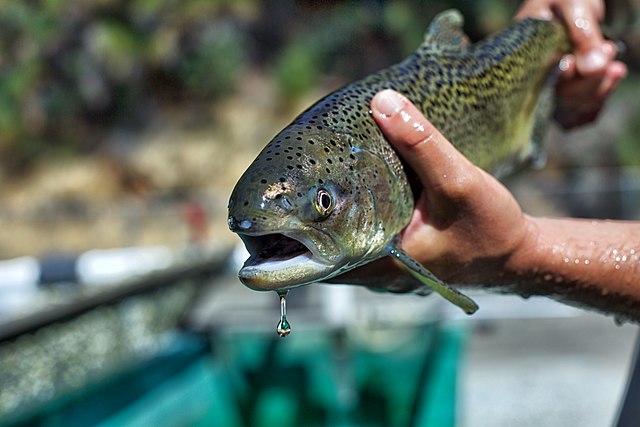Sacramento Chinook Salmon: Positive Population Trends
Chinook in Sacramento steadily declined from the late 1980s to the late 2010s, but things are looking up in 2022. According to NOAA, Chinook still are “one of just nine species considered to be most at risk of extinction in the near-term and in need of urgent protection.” Multiple environmental agencies work together to protect Chinook under the Endangered Species Act.
Sacramento Chinook were deemed Threatened in 1989 and moved further up the list to Endangered in 1994. The fish has remained in this classification for the past 18 years. NOAA Fisheries established eight domains stretching from the upper Sacramento River Valley to the northern portion of the San Joaquin River valley.
The area was chosen in part because there are three Endangered Species Act-listed salmon and steelhead species residing within the territory. NOAA reports that the “Central Valley spring-run Chinook salmon, Sacramento River winter-run Chinook salmon and California Central Valley steelhead,” all share the habitat.
Current Initiatives that Protect Salmon
In 2021, NOAA released a list of priority actions that needed to occur from 2021 to 2025 to help restore native populations. “This work is consistent with NOAA’s Water Initiative, which seeks to:
(1) Build strategic partnerships for water information services;
(2) Strengthen water decision support tools and networks;
(3) Revolutionize water modeling, forecasting, and precipitation prediction;
(4) Accelerate water information research and development; and
(5) Enhance and sustain water-related observations.”
The plan should help continue and uplift current efforts while emphasizing hydrology and partnerships.
Fortunately, it appears that previous and current efforts are helping stabilize Chinook salmon populations in Sacramento. Spring-run salmon saw extraordinary returns with “estimates ranging from 15,000 to 20,000 adult fish,” according to the Northern California Water Association.
Winter-run Chinook salmon also saw higher return rates in 2021 than they have in previous years. The Northern California Water Association reports, “More than 9,500 adult winter-run Chinook salmon returned to the Sacramento River to spawn this year.”

A winter-run Chinook salmon part of the Battle Creek reintroduction captive broodstock program at Livingtston Stone National Fish Hatchery located in northern California near Redding (Credit: USFWS/Steve Martarano via Public Domain)
Working Together to Protect Chinook
Thanks to stocking efforts and inter-organization partnerships, Sacramento’s spring/winter-run Chinook are making a recovery. Distinguishing the Chinook based on their seasonal runs makes a difference when targeting conservation efforts. Winter and Spring-run Chinook are the most threatened when compared to their fall and summer counterparts.
According to the California Department of Fish and Wildlife, Fall-run Chinook are the most abundant of the Central Valley races. Chinook are often referred to as King Salmon due to their size, taste, and popularity. In Sacramento, most commercial and recreational fisheries stock the fall-run salmon to protect more threatened species while still allowing the public to enjoy Chinook salmon.
Recognizing the role that climate change, particularly drought and warmer waters, have had on salmon populations across the globe, conservation efforts have begun to focus on making habitats more salmon-friendly. A part of this is stocking salmon in more hospitable waters, and another is cooling habitats down by stocking them with colder water.
The California Department of Fish and Wildlife highlights the work of organizations like the CDFW, USFWS, NOAA Fisheries, Bureau of Reclamation, the California Department of Water Resources, and the Winnemem Wintu Tribe, proving that partnerships and inter-organizational partnerships are vital to restoration efforts.
Conclusion
Reviewing population trends shows that Chinook in Sacramento are worth and capable of being saved. Larger environmental groups have been able to organize massive initiatives to protect salmon, but individuals can help too.
The EPA lists five things that the public can do to help protect native salmon populations. First, keeping streams shaded helps regulate temperatures and prevent erosion. Second, keeping waste and litter out of streams is an easy and simple action anyone can take to prevent damage to aquatic ecosystems. Third, protect shorelines, wetlands, and floodplains as they are important habitats for organisms that salmon (and people) rely on to survive. Fourth, purchasing salmon that have been caught sustainably empowers healthy fishing techniques. Finally, getting involved in local organizations helps keeps massive conservation efforts operational.

Pingback: FishSens Magazine | Nigiri Project Looks At Floodplains To Support Salmon Populations - FishSens Magazine